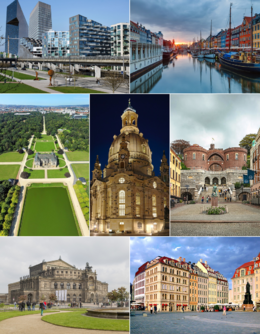Rimso
This article is incomplete because it is pending further input from participants, or it is a work-in-progress by one author. Please comment on this article's talk page to share your input, comments and questions. Note: To contribute to this article, you may need to seek help from the author(s) of this page. |
Rimso
Rimsø (Mescon) | |
|---|---|
| Free City of Rimso Fristaden Rimsø | |
 Top to bottom, left to right: Landskongreshus, Slangeby, Hanbjerg Park, Korsvej Cathedral, Hunseby Gate at Sivborg, National Institution of Space and Astronomy (NIPA), Rimsø borgerskabhus | |
| Etymology: "rim"; frost + "ø"; island | |
| Country | |
| Nation | Mesconia |
| Region | Rimsø hovedstad |
| First settled | c. 10th century |
| Government | |
| • Body | Borgerskab of Rimso |
| • Lord Mayor | Jon Ebsen Schou (SAP) |
| • Government | SAP / A-G89 |
| • Rigsdagen seats | 21 (of 318) |
| Area | |
| • National and federal capital | 612.82 km2 (236.61 sq mi) |
| Elevation | 23 m (75 ft) |
| Population (2021) | |
| • Urban | 3,115,816 |
| • Metro | 4,677,685 |
| Demonym(s) | Rimsonian, Rimsønisk |
| Time zone | UTC+0 (Euclean Standard Time) |
| ISO 3166 code | SK-RI |
| GRP (nominal) | €165 billion |
| GRP per capita | €53,000 |
| HDI (2019) | 0.972 |
Rimso (/'rɪmsoʊ/, Mescon: Rimsø; [ʁe̝m'søː], Gaullican: Rims; [ʁi:m]), officially the Free City of Rimso (Mescon: Fristaden Rimsø) is the capital and largest city of the Kingdom of Scovern, as well as the fifth-largest city in the Euclean Community by metropolitan population. Rimso is also the capital of the Kingdom of Mesconia, a constituent nation of Scovern and one of its three federal entities. Rimso sits on the tributary of the River Elling and its centre lies on Markesø, an island formed by the Elling's fork and confluence, where much of its medieval architecture still remains standing.
Archaeological evidence suggests Rimso was first settled in the 10th century by the marauder population of the Sixtenite Kingdom. After the kingdom's fall and the end of the Marauder Age, Rimso became one of many mercantile city-states that emerged across Scovern, but its geographic position on the Strait of Roetenburg as well as its natural harbour in Markesø allowed it to prosper with trade from the Rudolphine Confederation and North Euclea at large. It joined the confederation itself in the 13th century, but was annexed by Scovern during the Amendist Wars. The capital was moved from the traditional Istebjerg to Rimso in 1624, and underwent extensive development of its ports and markets in the 17th century under the supervision of Etrurian and Gaullican architects, also becoming renowned for its culture during the same period. Much of Rimso's famous baroque and neoclassical architecture comes from this period. Many prominent artists, musicians, philosophers and scientists worked in Rimso during the 18th century, where it emerged as one of Euclea's foremost cities.
Rimso's population grew rapidly as a result of industrialisation, with large factories built across the city. It also became a site of heavy naval manufacturing during this time. Rimso suffered minor damage from air raids during the Great War, but its location far from the frontlines allowed it to escape significant damage. After the war, Rimso was a major centre of government investment in infrastructure as well as cultural and urban development. The city remains the cultural, economic and political centre of Scovern, its most-populated city and richest urban economy.
The city is often ranked highly for its quality of life and is often among the world's most livable cities. Rimso is a major site of tourism in Scovern, and its ease of access by ferry from Werania facilitates travel from the mainland. Its history and culture have given rise to various nicknames for the city, including Povelien i nord ("Poveglia of the North"), referencing its extensive canal network, and Røde Rimsø ("Red Rimso"), owing to his strong history of social democracy.
